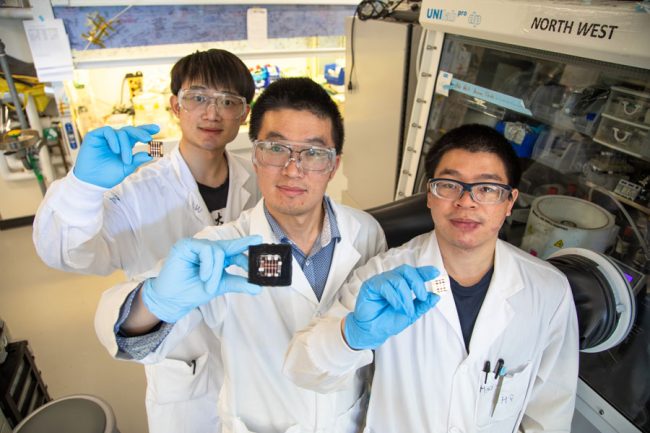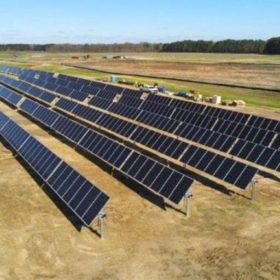Scientists from Canada, the United States, and the United Kingdom created a triple-junction perovskite solar cell with a record efficiency of 24.3% with an open-circuity voltage of 3.21 V. They shared their findings in “Suppressed phase segregation for triple-junction perovskite solar cells,” which was recently published in Nature.
The NREL has certified the cell’s quasi-steady-state efficiency as 23.3%.
“This is, to our knowledge, the first reported certified efficiency for perovskite-based triple-junction solar cells,” the academics said, adding that triple-junction perovskite solar cells have so far demonstrated a maximum efficiency of around 20%.
The team started by using the perovskite ABX3, which is made from a mix of different substances, including cesium, lead, tin, iodine, bromine, and small organic molecules. Its top layer is composed of mixed halide perovskites with a particularly high proportion of bromine (Br) and iodine (I).
“What happens in light-induced phase separation of these mixed perovskites is that the bombardment of high-frequency photons causes the phases that are richer in bromine to get separated from those that are rich in iodine,” said Dr. Hao Chen, co-lead author of the study. “This leads to an increase in defects and a decrease in overall performance.”
To overcome this challenge, the academics used solid-state magnetic resonance spectroscopy to simulate the effect of altering the composition of the crystals. They found that replacing the organic molecules for an all-inorganic perovskite structure and replacing cesium (Cs) with the element rubidium (Rb) suppressed light-induced phase separation (LIPS).
“We find that Rb, with a smaller cation radius than Cs, can be doped into the inorganic perovskite lattice and that the upper limit of Rb doping content is positively correlated with Br content,” the scientists said. “The around 2.0 eV [band gap] Rb/Cs mixed-cation inorganic perovskites with a larger degree of lattice distortion than their Cs-based counterparts show suppressed LIPS because of the decreased average interatomic distance of the [Cs or Rb]-site cation and I, and the increased energy barrier of halide ion migration.”
The triple-junction cells reportedly retained 80% of their initial efficiency following 420 hours of operation at the maximum power point.
The team includes researchers from the University of Toronto in Canada and Northwestern University in the United States.
This content is protected by copyright and may not be reused. If you want to cooperate with us and would like to reuse some of our content, please contact: editors@pv-magazine.com.








By submitting this form you agree to pv magazine using your data for the purposes of publishing your comment.
Your personal data will only be disclosed or otherwise transmitted to third parties for the purposes of spam filtering or if this is necessary for technical maintenance of the website. Any other transfer to third parties will not take place unless this is justified on the basis of applicable data protection regulations or if pv magazine is legally obliged to do so.
You may revoke this consent at any time with effect for the future, in which case your personal data will be deleted immediately. Otherwise, your data will be deleted if pv magazine has processed your request or the purpose of data storage is fulfilled.
Further information on data privacy can be found in our Data Protection Policy.